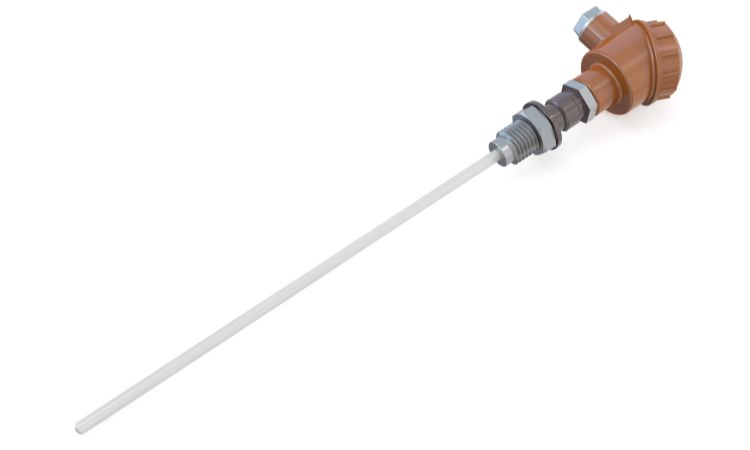The global thermocouple market size is expected to grow in the forecast period of 2024-2032 at a CAGR of 4.80%. This significant growth reflects the ongoing demand for reliable and versatile temperature measurement solutions across various industries. But what exactly are thermocouples, and why are they such a dominant force in temperature sensing?
Thermocouples are simple yet powerful temperature sensors. They utilize the Seebeck effect, a fundamental principle that generates a voltage proportional to the temperature difference between two dissimilar metals joined at one end. This voltage serves as a direct indicator of the temperature at the point of measurement, making thermocouples incredibly useful for a wide range of applications.
The Science Behind the Simplicity
The Seebeck effect is the cornerstone of thermocouple operation. When two dissimilar metals (like copper and constantan) are joined together, an electrical potential difference (voltage) arises at the junction based on the temperature gradient between the hot and cold ends. This voltage is directly proportional to the temperature difference, allowing us to translate voltage readings into temperature measurements.
In essence, a thermocouple acts like a tiny thermal battery. By measuring the voltage generated at the junction, we can determine the temperature at the point of interest. This simple yet effective principle makes thermocouples highly reliable and cost-effective temperature sensors.
A Spectrum of Choices: Thermocouple Types
The Thermocouple Market offers a variety of thermocouple types, each catering to specific temperature ranges and applications. Some of the most common types include:
- Type K (Nickel-Chromium/Nickel-Aluminum): Known for its wide operating range (-200°C to +1260°C) and general-purpose applications. It’s a popular choice in industries like metal processing, furnaces, and power generation.
- Type J (Iron/Constantan): Offers a moderate range (-100°C to +750°C) and excels in oxidizing environments. Commonly used in exhaust systems, ovens, and furnaces.
- Type T (Copper/Constantan): Ideal for lower temperature measurements (-260°C to +350°C). Applications include cryogenic processes, refrigeration systems, and air conditioning.
The selection of a specific thermocouple type depends on the desired temperature range, environment, and application requirements.
Building a Reliable Sensor: Thermocouple Construction
A basic thermocouple consists of two dissimilar metal wires welded together at one end, forming the measuring junction. These wires are then encased in a protective sheath made of materials like stainless steel, Inconel, or ceramic. The sheath safeguards the wires from harsh environments, ensuring accurate and reliable temperature measurement. The choice of sheath material depends on factors like temperature range, chemical compatibility, and mechanical strength.
Ensuring Accuracy: Calibration and Cold Junction Compensation
Thermocouples, like any measuring instrument, require calibration for accurate temperature readings. This process involves comparing the thermocouple’s voltage output with a known temperature source to establish a precise correlation.
Another crucial factor in thermocouple operation is cold junction compensation. The reference junction, where the two wires connect outside the measured environment, can experience temperature fluctuations. These variations can affect the voltage output and subsequently, the measured temperature. Cold junction compensation techniques account for these variations, ensuring accurate temperature readings at the point of measurement.
Thermocouples in Action: Diverse Applications
The Thermocouple Market thrives due to the vast applications of these sensors across various industries. Some prominent examples include:
- Industrial Processes: Monitoring temperatures in furnaces, kilns, boilers, and refineries for process control and safety.
- HVAC Systems: Measuring air and fluid temperatures in heating, ventilation, and air conditioning systems to maintain comfort and efficiency.
- Scientific Research: Used in laboratories and research facilities for precise temperature measurement in experiments and testing.
- Power Generation: Monitoring temperatures in turbines, generators, and transformers to ensure safe and efficient operation.
The inherent advantages of thermocouples, including their wide temperature range, fast response time, and affordability, make them the go-to choice for temperature measurement in countless applications. However, it’s important to acknowledge their limitations.
Strengths and Weaknesses: Understanding the Trade-Offs
Thermocouples offer several advantages:
- Wide Temperature Range: They can measure temperatures from cryogenic levels to extremely high temperatures, catering to diverse applications.
- Fast Response Time: Thermocouples react quickly to temperature changes, making them suitable for dynamic processes.
- Cost-Effective: Compared to other temperature sensors, thermocouples offer a reliable and cost-effective solution.
The Future of Thermocouples: Embracing Innovation
The Thermocouple Market is constantly evolving, with advancements in materials and technology paving the way for exciting possibilities. Here’s a glimpse into what the future holds:
- Wireless Thermocouples: The integration of wireless technology into thermocouples eliminates the need for cumbersome wiring, simplifying data acquisition and enhancing accessibility in remote or hazardous environments.
- Miniaturized Sensors: Advancements in miniaturization allow for the development of smaller, more versatile thermocouples. This opens doors for applications where space is limited, such as in medical devices or microfluidic systems.
- Self-Calibrating Thermocouples: Research is ongoing in developing self-calibrating thermocouples that can automatically adjust for drift, reducing maintenance costs and improving long-term accuracy.



